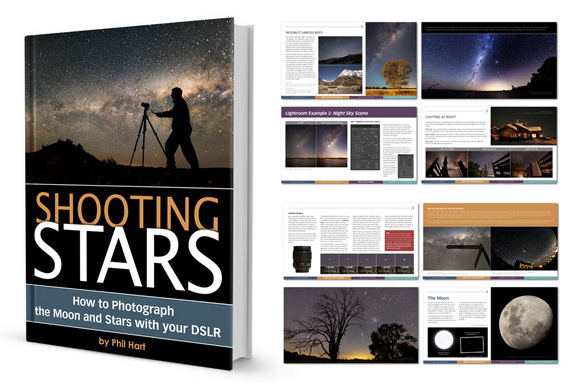After the solar eclipse in Idaho, I couldn’t resist continuing my “long-service leave” and returning to Canada’s Yukon Territory for some early-season aurora hunting. I had just two and half weeks (one New Moon cycle), based with my friends and supporters Andrea and Florian Lemphers at Shallow Bay, north of the capital, Whitehorse.
I had with me a Canon 5D Mark IV and a pair of Canon 6D Mark II cameras (one of which was on loan from Canon Australia). Clear skies were always going to be the biggest challenge, especially during the fall, but I hit four clear nights in a row from the start, so luck seemed to be on my side. I also managed to peg some beautiful cold clear nights and sweet aurora activity at clutch locations I explored along the way. My favourites were North Canol Road and Tombstone Park on the Dempster Highway.
With the 5D Mark IV, I captured 1080p video at the camera’s maximum 32,000-ISO setting. Super-fast Canon and Sigma ART wide lenses didn’t hurt either. The video files as generated are pretty noisy (applying noise reduction in-camera on the fly is presumably too taxing for the processor?), but a simple application of Neat Video temporal noise reduction in After Effects made a big difference to the viewing quality of the footage above.
Most of these clips were captured on my first night, when the aurora went nuts for just a few minutes, which goes to show how you have to be prepared and ready to roll from the start. There’s no doubt that pushing the ISO to the max and applying heavy noise reduction softens the image crispness, but being able to show the aurora in real-time (how crazy is that!?) is still pretty cool.
I did also capture some live 4K video, but the combination of the 1.7x crop and significant reduction in maximum allowable ISO speed meant the results weren’t as impressive. However, with the extra pixel detail, noise reduction performed very well on these files. If I had another two weeks and some more brilliant aurora displays, I’d definitely play with the 4K feature again with a super-wide lens to compensate for the 4K crop-factor.
One of the selling points of the Canon 6D Mark II has been the 4K timelapse video feature. I was very keen to experiment with this under the Yukon’s Northern Lights. I’m used to capturing RAW file sequences and rendering them, but there is a lot to be said for the fun and efficiency of capturing direct-to-4K timelapse in-camera. (The 4K file is available to download and view via Vimeo, which I highly recommended for the best quality.)
When I wasn’t shooting 4K, with my four cameras, I captured 2.5 TB of RAW timelapse in just over two weeks. That creates such a headache in terms of data storage and processing power that I haven’t even started editing that footage yet. In contrast, editing this 4K video from the 6D Mark II required nothing more than throwing the clips together in Premiere Pro with just a slight brightness/contrast tweak for some punch. No noise reduction has been applied to the files out of the camera. It was a lot of fun capturing these clips—and being able to see the timelapse video result—in-camera immediately. Motivation in the field like that really helps keep you going while your fingers freeze at 2 a.m.!
The bright and fast sequences in this video were captured at one frame per second, the fastest the camera allows in 4K timelapse (resulting in footage 25 times real speed). Some of the quieter moments I captured at one frame every two to three seconds, as longer exposures per frame were required. Again, super-fast Canon and Sigma ART lenses were critical for this outcome.
There is also an auto-exposure feature in the 6D Mark II timelapse settings intended for day-to-night transitions, which I thought may be helpful for adjusting to the rapidly varying brightness of aurora displays. In practice, I found it easier and more reliable to use fixed exposure, but I’d experiment further with this feature if I had more time; it is surprisingly hard to concentrate on details like this when the aurora keeps fading and then pulsing back into action without warning.
Thanks to my talented friend, cellist and composer Kristin Rule, for the music, and to my hosts, Andrea and Florian Lemphers, whose support made all of this possible.
For Further Training:
Capturing star trails and other night sky scenes is truly one of the most technically difficult forms of photography. This popular in-depth eBook, Shooting Stars, written by astrophotography award winner Phil Hart, will show you how to shoot your own stunning images of the moon and the stars with just your digital SLR and a tripod.
We were able to arrange an exclusive 50% discount for PictureCorrect readers which ends soon. It also carries a 90 day happiness guarantee, if you are not satisfied just let us know and we will give you a full refund so there is no risk in trying it.
Deal found here: Shooting Stars – How to Photograph the Moon & Stars at 50% Off
Go to full article: Capturing Aurora Borealis on Canon DSLR Cameras
What are your thoughts on this article? Join the discussion on Facebook
PictureCorrect subscribers can also learn more today with our #1 bestseller: The Photography Tutorial eBook
The post Capturing Aurora Borealis on Canon DSLR Cameras appeared first on PictureCorrect.
from PictureCorrect https://ift.tt/2T33uHE
via IFTTT







0 kommenttia:
Lähetä kommentti